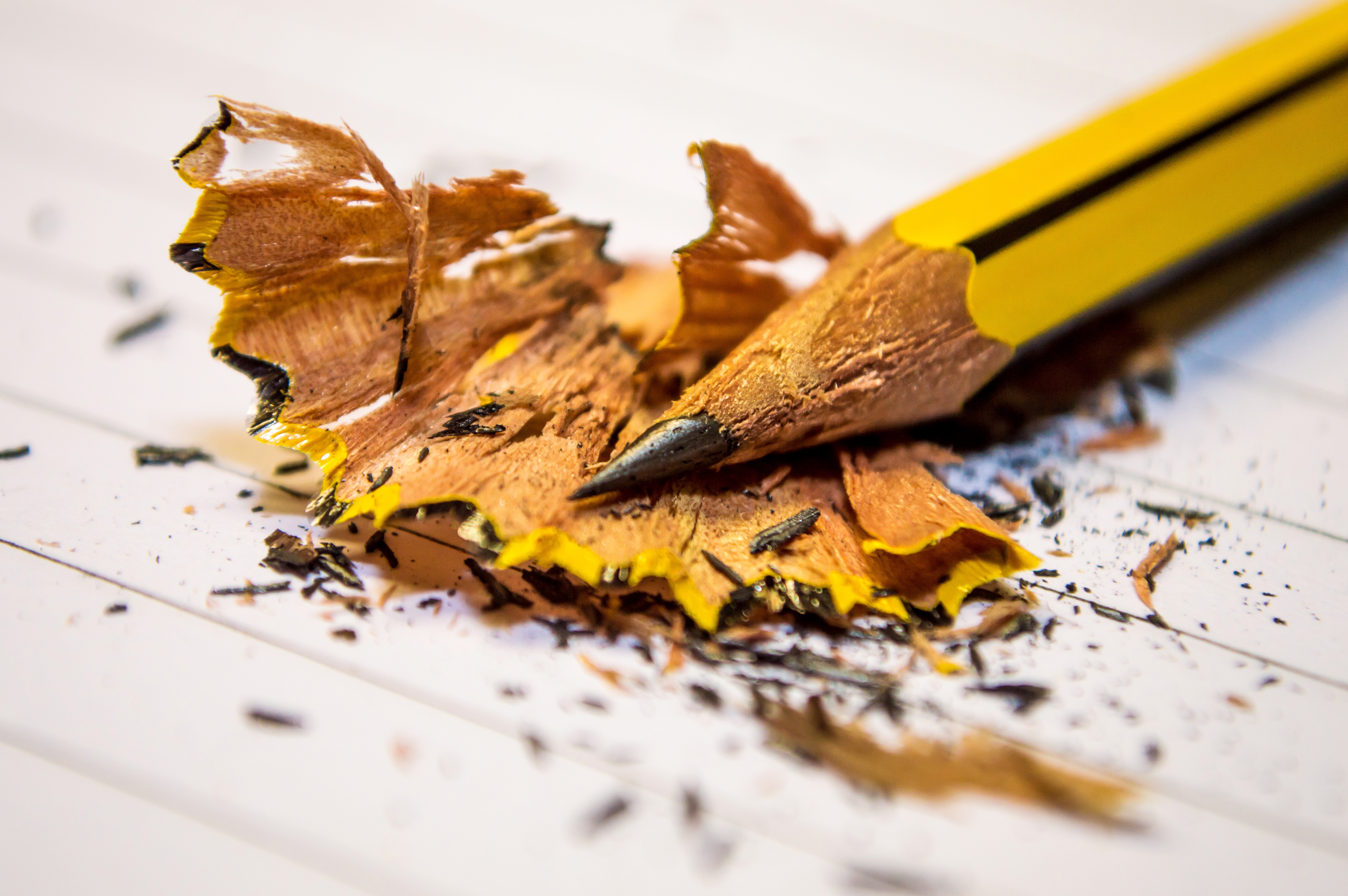
A Guide to Obscure Tasting Notes
Where do flavor descriptors like “pencil shavings,” “graphite,” or “pencil lead” come from? The truth is not as weird as you think.
No, you don’t have to break out the pencil sharpener to understand better where these obscure notes come from. That’s a good thing because otherwise, I’d be concerned for the wine lovers who know all about cat pee…
In this post, I will break down where pencil shavings, and other obscure tasting notes, come from and how to add them to your everyday wine vocabulary!

What Do Pencil Shavings Taste Like?
In short, when someone says a wine tastes of pencil shavings, pencil lead, or graphite, they can be referring to the aroma, flavor, or both.
AROMA
A majority of the way we taste wine actually comes from the aroma. The aroma of pencil shavings usually refers to a fresh woody flavor and can also be synonymous with cedar. These aromas come from either the tannins in the wine or the winemaking process.
Tannins are found in many substances, most notably grape skins, tea, and wood. The biggest reason wine is aged in oak is specifically because of the oak’s ability to absorb tannins in wine.
So, just like a wine can have notes of black tea, a wine can have notes of wood or pencil shavings if it’s rich in tannins and or aged in new oak barrels.
FLAVOR
When a wine has flavors of pencil lead, that usually refers to a metallic or mineral taste. Metallic flavors in wine are usually a fault and come from spoiled yeast, though it may be used synonymously with minerality.
Minerality in wine is a bit harder to describe since it can refer both to texture and flavor. It can come from the soil type (ex. limestone) or the climate (close proximity to seawater). If you’re not sure how to pinpoint minerality, other synonymous descriptors include saline or wet stones.
Did you know there are two ways humans detect aromas? The first is through the nose, and the second occurs in the back of the mouth, AKA retronasal olfaction. This occurs when the wine mixes with saliva, creating volatile compounds that waft upwards to the back of the nose.

Where do Tasting Notes Come From??
This is a big question since every aspect of the winemaking process contributes to imparting tasting notes in the wine. Here’s a quick breakdown of how different components of making wine contribute to its flavor.
SOIL
High mineral content can exhibit graphite or deep mineral flavors, most notably slate (Mosel, Germany) and limestone (Burgundy).
CLIMATE
Proximity to seawater and ocean breezes can impart mineral notes, such as in Provencal Rosé.
VARIETAL
Grapes with naturally high tannins, such as Nebbiolo, can be quite mouth-drying and exhibit black tea or tongue depressor textures.
WINEMAKING PROCESS
The longer a wine is aged in oak, especially new oak, the more you might notice potent flavors of wood or oak spice, such as a Bordeaux wine.
How to Identify Obscure Tasting Notes
Part of the fun about wine is constantly learning and expanding your palate. Here are a few tips and tricks to help you think up more obscure tasting notes when tasting a wine.
Narrow your choices: When you taste a full-bodied red wine, you’re probably not looking for flavors of peaches or lemon zest. Use this to your advantage and purposefully look for obscure flavors in wines that seem most fitting.
Ask around: Tasting with friends is the perfect way to get new perspectives and broaden your wine-tasting vocabulary.
Do some research: Many wines have tasting notes on the winery’s website, so give it a Google and see what the winemaker tastes in this wine.

A Few Other Obscure Tasting Notes
Pencil shavings are fun, but what about some other quirky descriptors? Here’s a brief explanation of how to taste the following flavors/aromas in wine.
CAT PEE
Tangy, pungent, and funky, cat pee is often used to describe the green and potent flavors in a high-quality Sauvignon Blanc.
PETROL
Potent and distinctive aroma most commonly found in warm climate Riesling.
TAR
Strong, dark, intense, and almost resinous quality most often found in Nebbiolo.
Some wines you can try that are likely to have notes of pencil shavings include Bordeaux red blends, Priorat red blends, and Cabernet Franc.
One of the things I love most about wine is the fun of trial and error. Whether tasting wine to broaden your palate or simply to have fun with friends, remember not to take it too seriously!
What are some favorite quirky descriptors you’ve noticed when trying wines? Leave a comment below, and let’s see how weird it gets!



Olivia is a Washington-based freelance writer with a Level 2 Award in wines from the Wine & Spirit Education Trust. She has a passion for all things food, wine, and travel, though her heart belongs to the Pacific Northwest. When she’s not sipping on a glass of Washington Cab., she’s usually bikepacking, crocheting, or chillin’ in the sun with her dog Tater.
IG: @liv_eatslocal
Website: liveatslocal.com
